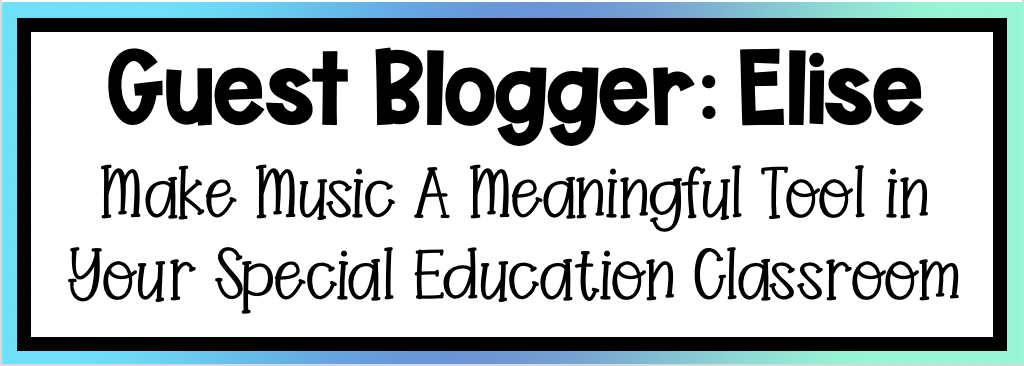I am excited to introduce this week’s guest blogger, Elise from the Accessible Music Room to chat about using music in your classroom!
There are so many areas that can be used to further student learning. We as adults often find ourselves having musical experiences and using music to further our own needs. In the classroom, this also applies!
Want to know more about using musical activities you can use in your classroom? Sign up for the email list here.

Music is a true vulnerability in sharing and understanding feelings. Many students- especially neurodivergent students- often express feelings and communicate in a different way. Utilizing this to build a sense of community and further understand our own feelings is natural. Here are some ways to incorporate that into your classroom:
Music is also a great means of working on language and memory. The tempo (speed) of a song partnered with lyrics and repetitive nature provide a great basis for any learning! Here are some tips for integrating songs into activities to improve language and memory:
Music promotes memory, connection, and understanding. Music can also be used to portray emotions. If you are someone who uses the Zones of Regulation, consider utilizing sounds as a means to reinforce that concept.
Example Activity: Have students choose from a list of songs that they could use to support them when they are in the green, yellow, red, and blue zones (such as “Happy,” “Put on a Happy Face,” “Ode to Joy,” and more).
Extension Activity: Have students create a song to describe each zone using chrome music lab.
Looking for more ways to make your classroom environment welcoming, look here for more!
Instagram | TeachersPayTeachers | Facebook | Boom Learning Library | Pinterest |Youtube
What are you looking for?
COPYRIGHT © 2025 Full SPED Ahead